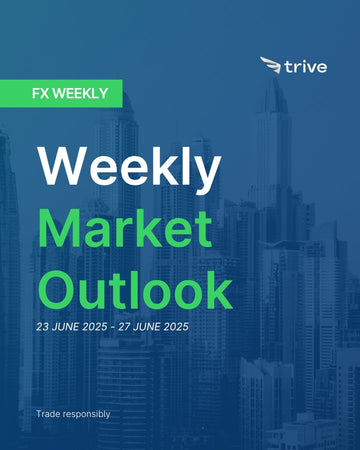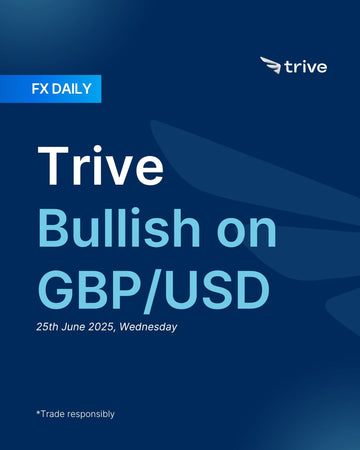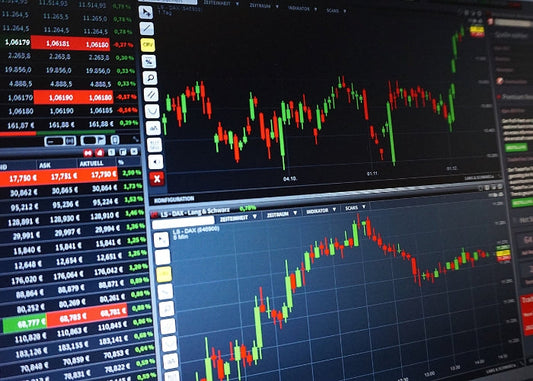FX Daily: Trive Bullish on EUR/USD

With our long term outlook on the US dollar remaining bearish, a sharp drop in EUR/USD into oversold levels would prompt us to go long on the euro, anticipating any flight to safety move to prove short lived.
USD: Don’t get fool!
The US Dollar climbed sharply this week, becoming the main safe haven asset as tensions in the Middle East escalated and the Federal Reserve took a hawkish tone. The DXY jumped from near 97.68 to break above 99.00 as fears of direct US military action in the Israel Iran conflict took over market sentiment. The mood turned more cautious midweek after aggressive statements from President Trump and reports that he was seriously considering strikes on Iranian nuclear sites. This geopolitical flight to safety was intensified by the Federal Reserve’s meeting on Wednesday. Although the Fed kept rates unchanged and maintained its projection of two cuts in 2025, internal dynamics shifted in a hawkish direction. The Fed raised its inflation forecasts and lowered growth expectations, signaling a firm commitment to a restrictive policy stance. Chair Jerome Powell, in his press conference, emphasized patience and dismissed the possibility of near term cuts, which further strengthened the dollar. Toward the end of the week, a slight deescalation occurred when Trump announced a two week window for diplomacy. The dollar gave back some gains but still ended the week much stronger, as both geopolitical risk and central bank policy reaffirmed its safe haven appeal.
On the economic data front, May’s retail sales figures were mixed. The headline number missed expectations with a 0.9% drop, but the control group figure used in GDP calculations came in stronger at +0.4%. Meanwhile, housing data showed signs of weakness, with May housing starts down by 9.8% and building permits falling 2.0%. Regional manufacturing surveys added to concerns about a slowdown. The New York Fed’s manufacturing index dropped to 16.0, well below expectations, and the Philadelphia Fed’s index remained negative at 4.0, with its employment component falling to its lowest since May 2020. Labor market data also suggested a gradual loosening. Weekly initial jobless claims stayed elevated at 245,000, and the four week average rose to its highest since August 2023.
From a policy standpoint, the Fed’s decision to hold rates was expected, but the details revealed a more hawkish tone. The updated Summary of Economic Projections kept the median 2025 forecast at 50 basis points of cuts. However, more members now projected no cuts at all this year, up from four in March to seven. Inflation forecasts for 2025 and 2026 were revised higher, and GDP expectations were lowered, partly due to concerns over the inflationary effects of tariffs. Powell’s press conference reinforced a cautious approach, describing policy as only “modestly restrictive” and underlining the need to wait and see how tariffs play out before making any decisions. Following the Fed’s blackout period, Fed Governor Waller, a known dove, suggested rate cuts could come as early as July. This clashed with Powell’s more reserved stance but did lead markets to price in slightly more easing by the end of the year. Richmond Fed President Barkin took a more conservative view, saying there was “no rush to cut rates.
Geopolitical developments were the key force behind the dollar’s rally. Concerns about an escalation between Israel and Iran intensified on Tuesday and Wednesday, especially as reports surfaced that Trump was holding security council meetings and weighing US military action on Iran’s Fordow nuclear site. His rhetoric further spooked markets, including calls for Tehran’s evacuation and claims of US control over Iranian airspace. However, the tone shifted slightly by the end of the week. Trump announced he would delay any decision for two weeks, allowing room for diplomacy. Reports also indicated that Iran was open to discussing limits on uranium enrichment with European countries, which helped ease some of the market’s immediate concerns and pulled the dollar back from its highs.
The US Dollar has recently reacted in a more typical way, strengthening after geopolitical tensions and a hawkish Fed meeting. This shows that the Dollar still acts as a safe haven in uncertain times, and we see some upside potential in the short term.
However, our overall view is bearish. Over time, we believe the Dollar will weaken as investors shift capital away from US assets. So, while short-term gains are possible, especially if risk-off events continue, we see these rallies as opportunities to sell the Dollar—particularly when it becomes overbought.
EUR: Real King
The Euro spent most of the week under pressure, largely reacting to the stronger US Dollar and the worsening geopolitical crisis in the Middle East. It began the week testing the 1.1600 level but couldn’t hold onto any upward momentum. As tensions between Israel and Iran escalated, the resulting spike in oil prices became a major drag on the Euro, especially given the Eurozone’s dependence on energy imports. This raised concerns about a potential stagflation shock, which weighed on the region’s growth outlook and complicated the European Central Bank’s policy decisions. A stronger than expected German ZEW survey gave the Euro a short lived boost midweek, but it was quickly overshadowed by the broad safe haven demand for the US Dollar. As a result, EUR/USD dropped to weekly lows below 1.1500, with the Euro’s movement driven almost entirely by market sentiment and dollar strength. A slight easing of tensions late on Friday helped the Euro recover some ground, but it still ended the week without a clear direction of its own.
In terms of data, Germany’s ZEW Economic Sentiment index for June jumped to 47.5, well above the 35.0 consensus. The report highlighted improving investment and consumer demand as key drivers of confidence. However, this upbeat result failed to provide lasting support for the Euro. Final Eurozone inflation data for May confirmed HICP at 1.9% year on year, and first quarter wage growth slowed to 3.3% from 4.1%. These figures, along with downward revisions to Italy’s May CPI, reinforced the ongoing disinflation trend and supported the ECB’s cautious stance. Elsewhere in Europe, a weak UK retail sales figure of 2.7% month on month on Friday, while not directly impacting the Euro, contributed to the generally risk averse mood across European markets.
On the policy front, several ECB members, including Panetta, Stournaras, and Nagel, repeated a cautious tone, stressing data dependency and a meeting by meeting approach. After the recent rate cut, officials made it clear they were in wait and see mode, avoiding any firm guidance on future actions. A key concern among policymakers was the recent rise in oil prices, which could complicate inflation projections that were based on lower energy costs. De Guindos and Panetta both noted that this surge in energy prices could distort the ECB’s inflation outlook. Regarding the exchange rate, Vice President de Guindos remarked early in the week that a EUR/USD level around 1.15 was not a major concern, suggesting the ECB wasn’t focused on defending the currency’s level.
Geopolitics remained the most significant headwind for the Euro. The deepening Israel Iran conflict drove oil prices higher, directly harming the Eurozone economy due to its reliance on energy imports. This dynamic acted as a direct tax on consumers and businesses, threatening to derail the region’s economic recovery. Meanwhile, the possibility of US tariffs on European goods added another layer of uncertainty. Reports suggested that European officials were coming to terms with the likelihood of a 10% baseline reciprocal tariff in any eventual deal, though nothing had been finalized. EU Economy Commissioner Dombrovskis warned that the bloc was ready to respond if negotiations failed. Separately, tensions with China also flared up after the EU canceled a high level economic meeting ahead of their July summit, citing a lack of progress in resolving trade disputes.
Market sentiment remained firmly risk off, and the Euro’s movement closely tracked the US Dollar’s strength. Unlike the dollar, which gained from its safe haven appeal and hawkish Fed outlook, the Euro struggled as the risk off environment hit energy sensitive economies like the Eurozone particularly hard. Rising oil prices were viewed as an economic negative for the region, dragging down the Euro while other currencies like the dollar benefitted.
The EUR is supported by fiscal stimulus expectations and diversification away from the USD. If the conflict between Iran and Israel shows signs of easing or, even better, moves toward a peace agreement, that could open up attractive trading opportunities.
With our long term outlook on the US dollar remaining bearish, a sharp drop in EUR/USD into oversold levels would prompt us to go long on the euro, anticipating any flight to safety move to prove short lived. Conversely, should the conflict escalate further and draw in the United States, we would shift our focus to more defensive, risk off plays.
 EUR/USD 4H
EUR/USD 4H
Disclaimer
This material is provided for informational purposes only and does not constitute financial, investment, or other advice. The opinions expressed in this material are those of the author and do not necessarily reflect the views of Trive International. No opinion contained in this material constitutes a recommendation by Trive International or its author regarding any particular investment, transaction, or investment strategy. This material should not be relied upon in making any investment decision.
The information provided does not consider the individual investment objectives, financial situation, or needs of any specific investor. Investors should seek independent financial advice tailored to their individual circumstances before making any investment decisions. Trive International shall not be liable for any loss, damage, or injury arising directly or indirectly from the use of this information or from any action or decision taken as a result of using this material.
Trive International may or may not have a financial interest in the companies or securities mentioned. The value of investments may fluctuate, and investors may not get back the amount they originally invested. Past performance is not indicative of future results.
For more information about Trive International, please visit http://trive.com/int
Additional Information
Investing involves risk, including the potential loss of principal. Diversification and asset allocation strategies do not ensure a profit or guarantee against loss. The content in this material is subject to change without notice and may become outdated or inaccurate over time. Trive International does not undertake any obligation to update the information in this material.
By accessing this material, you acknowledge and agree to the terms of this disclaimer. If you do not agree with these terms, please refrain from using this information.
कोई टिप्पणी नहीं
Home
Trive
TriveHub





0 टिप्पणियाँ